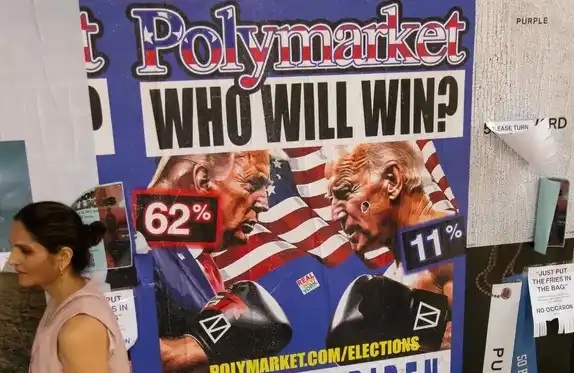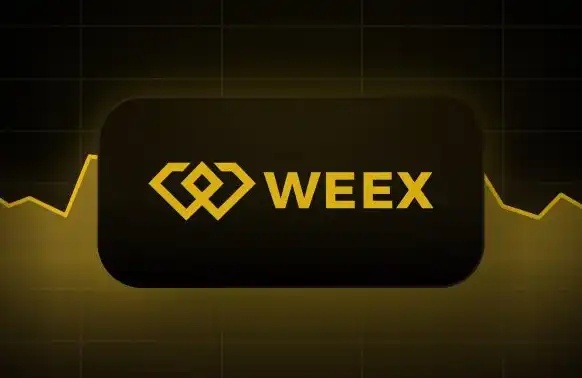Shenyu: More than 20,000 BTC were mined in a mine in the center of Nanjing. Overseas mining has many pitfalls and little profit.
Original title: "Cobo Shenyu: An Old Miner's Mining Story"
Original source: Cobo Global
During the 2024 Hong Kong Web3 Carnival, Cobo and Antalpha Prime, together with BounceBit, SYS Labs, and Rollux, held an offline theme event "BTC Friends" in Hong Kong on April 7 with the support of Tether Gold. Old Bitcoin miners and BTC Layer2 new forces gathered together to discuss the glorious years of early Bitcoin miners and look forward to the future of the BTC ecosystem.
During the dinner, Cobo co-founder and CEO Shenyu shared with the guests the interesting reorganization of early Bitcoin miners, reviewed the various problems encountered by miners going overseas, and shared his views on BTC Layer 2 and AI and Cobo's layout in them.
We have sorted out the content shared by Shenyu and shared it with Cobo users and partners.

Self-introduction of an old miner
Hello everyone, I am Shenyu, an old miner, an old leek, an NFT collector, and a victim of inscriptions on the chain. In the past ten years, I have experienced ups and downs in the industry, from the earliest GPU mining, the birth of ASIC, China's first mining pool, the first halving of Bitcoin, Mt. Gox... Along the way, in 2017, Ethereum's ICO brought smart contracts and the issuance of emerging assets; in the last cycle, we experienced DeFi Summer and the outbreak of NFT; a year ago, we experienced a boom in the Bitcoin ecosystem, and many inscriptions emerged from the bottom up, including the various second layers and side chains of Bitcoin that have been very popular in recent months.
Over the past decade, we have witnessed the entire Crypto process from scratch. Fortunately, in 2024, Bitcoin has completed its early turning point. The launch of the Bitcoin ETF in January 2024 means that Bitcoin will officially debut in front of the public as a mature financial asset.
Standing in 2024, at this moment, we can clearly see the infinite possibilities of the future of blockchain. The core issues of the blockchain industry that have troubled us for a long time are basically clear today. What we have to face next is the final wave of growth in the entire industry, making blockchain truly popular, and even allowing end users to use the convenience and security brought by blockchain technology without feeling. I believe that this can be achieved on a large scale in the next one or two cycles.
The Opportunity of Institutionalized and Professionalized Mining and the Past of Mining
One of the most interesting things about this industry is that it relies on the power of cycles, continuous iterations and pitfalls to drive the industry's growth. The story of institutionalized mining began in the bear market at the end of 2014 and 2015. At that time, the price of BTC fell too fast. At that time, ASIC had already grown to a small scale, and the profit margin suddenly fell dramatically. The earliest payback period for Bitcoin mining was 3 months and 6 months, and later it became a payback period of one year or even two years. When in a rapidly falling bear market and the price of the currency has been maintained at the bottom, miners must optimize the cost of electricity costs and must corporatize and scale mining, otherwise the marginal profit will become very low and the ability to resist risks will be particularly poor. At that time, this market situation forced miners to relocate from the mines that had very good conditions at the beginning.
You may not believe it when I say this, but the first large-scale mine I owned was located in the center of Nanjing, two kilometers away from Wanda. The conditions were very good, and IDC central air conditioning was used. Those mining machines were very valuable. We mined more than 20,000 Bitcoins and more than 100,000 Ethereums in that mine. But when the bear market came, we couldn't mine anymore because the electricity cost was too high. Although the conditions were very good, the living conditions were very good, and the mine was also well decorated, there was no way. The mining machines had to be moved to a place where the electricity cost had a competitive advantage.
At that time, this group of miners came from all over China with provincial power grid maps to find out if there was any power or redundant power resources. They drove along the Dadu River in the mudslide environment, visited hydropower stations one by one, and then negotiated and built mines.
During that wave, the encryption computing power of the entire Crypto world began to trend towards scale and centralization. At that time, 70 to 80 percent of the world's computing power was probably concentrated along the Dadu River, and in winter near the pit power stations in Xinjiang. At that time, the power consumption was not that high. The root cause of this large-scale development was that the bear market was too long, and everyone had to optimize costs and improve efficiency.
Problems and barriers encountered by miners going overseas
Everyone was very interested in overseas mining at the beginning and wanted to do a big job. After arriving in the United States, I found that there were really many pitfalls: from the early legal structure and tax planning to the later mine operation and maintenance, repair efficiency, and online rate; finally, there were many factors such as unstable electricity prices, special events that required shutdowns, and other situations. In the end, the comprehensive cost was very high and the efficiency was very low. Many miners found that the United States was not such an ideal market, so they began to look for other markets. The remaining markets might be South America and Africa. South America and Africa are problems at other levels, which are problems of political stability and security. In this process, everyone still misses China's rapid infrastructure and relatively good environment, and there are relatively few pitfalls.
Another situation overseas is that the resources of new players, especially political resources, are very good. Many sovereign funds have already started to enter the mining market, and they don’t even care about the payback period, which leads to very low profit margins.
Coming along the way, I feel that this wave of miners going overseas is also very difficult. There are only a few mines that can finally run and operate stably.
BTC Layer 2 Project and Cobo’s BTC Ecological Layout
The prosperity and development of the Bitcoin ecosystem in the past one or two years has led to the emergence of some new asset issuances and types from the bottom up. In the process of Bitcoin ecosystem development, the entire Bitcoin main network has been in a state of long-term congestion, and eventually these demands have overflowed. Around these spillover needs, everyone is exploring some sidechain and second-layer network solutions. In addition, with the development of modular blockchain technology on the EVM side in the past few years, these technologies are relatively mature, so we have recently seen a rapid emergence of a number of projects and entrepreneurial directions that attempt to build a second-layer network on the Bitcoin ecosystem.
In this process, the biggest core difference between Bitcoin and EVM is that Bitcoin's support for smart contracts is relatively limited. In the short term, to quickly solve this problem, the only way is to rely on the bridge to map Bitcoin assets to the second-layer network and EVM in some way. How to solve the problem of asset security and relative decentralization of the bridge? In the short term, there can only be some compromise solutions.
Cobo provides a solution based on MPC, which is similar to multi-signature based on multi-party computing. This solution allows the project party to hold a private key shard, Cobo as a co-manager also holds a private key shard, and the third private key shard is backed up by a third-party security company or insurance company selected by the project party. This solution can effectively avoid the risk of single point failure, and at the same time allow multiple entities to collaborate to enhance the financial security of the entire bridge. In this process, Cobo can only assist in some risk control designated by the project party, and cannot determine the destination of funds.
At the same time, we have also seen some new technical solutions, including some updates and iterations at the Bitcoin Opcode level, and some cross-chain communication solutions. In the long run, I think this problem will be gradually improved and solved, so in this process we strive to provide everyone with a relatively safe and reliable solution in the early stage to ensure that we have some trial and error opportunities in this ecosystem and can observe its further development.
Cobo's AI layout
The development of AI has brought very large variables to the individual level. Many of our workflows and information flows can basically solve 40% to 50% of daily work pressure through AI, and the efficiency is greatly improved. Another dimension, from the company level, we have also been thinking about AI, especially after the accuracy of the subsequent AI Agent has been greatly improved, whether it can be combined with the blockchain industry. From a current perspective, since the native information flow and asset flow of blockchain are open and transparent on the chain, if the subsequent AI Agent has a relatively high accuracy and execution efficiency, it should interact with the blockchain.
We can imagine a scenario: for example, two AI Bots represent two different personal entities. They can deploy corresponding smart contracts on the chain, and the two AI Bots can interact and trade with each other. One scenario we imagine is that after the blockchain solves the performance problem, the cost on the chain will be greatly reduced. The final state may be that there are a large number of AI Agents on the chain to initiate and use transactions directly, including the technology of smart contracts. Humans may only do some simple risk control for these AI Agents, set some rules for them, and let them execute in a certain way and method. It is expected that in the next three to five years, we may see some relatively mature prototypes.
Based on this vision, Cobo, a company that focuses on the security management of the underlying private keys of wallets and uses good risk control, is working hard to unify the underlying and risk control layers of our entire wallet product lines, and provide a set of standard APIs to access the capabilities of AI Agents. We hope to see the large-scale layout and application of AI technology in the blockchain field in the future.
It is expected that the prototype of our product will be available in the second half of this year, and everyone is welcome to try it out.
Original link
Welcome to join the official BlockBeats community:
Telegram Subscription Group: https://t.me/theblockbeats
Telegram Discussion Group: https://t.me/BlockBeats_App
Official Twitter Account: https://twitter.com/BlockBeatsAsia


 Forum
Forum Finance
Finance
 Specials
Specials
 On-chain Eco
On-chain Eco
 Entry
Entry
 Podcasts
Podcasts
 Activities
Activities
 OPRR
OPRR







